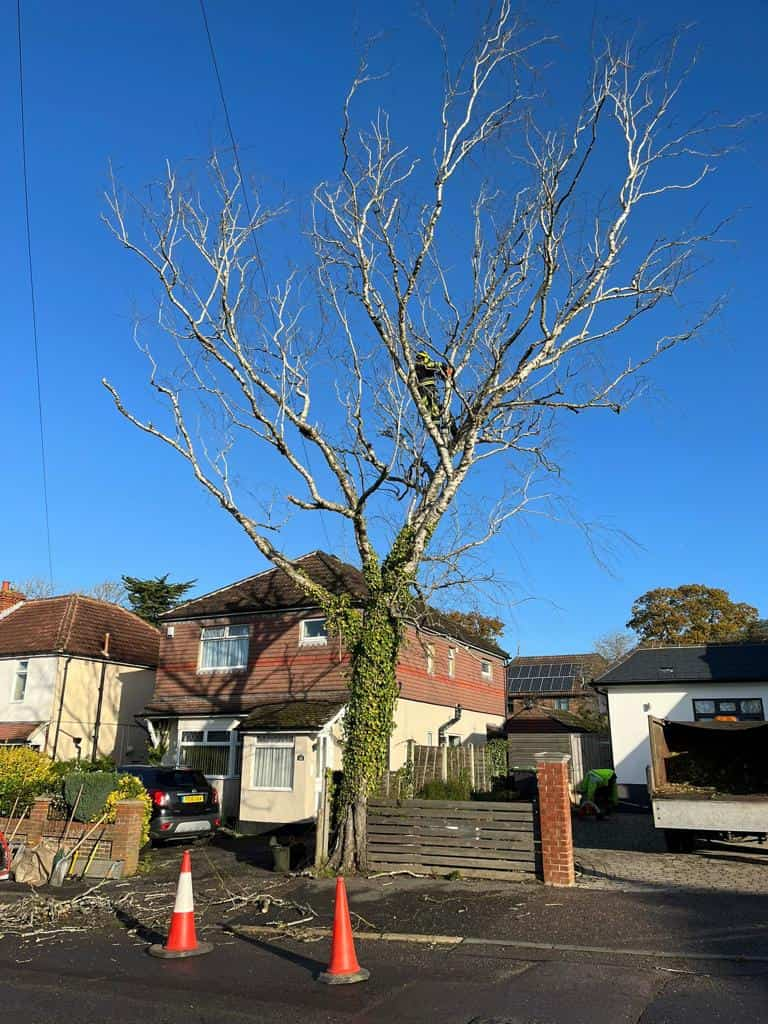Understanding Tree Pruning and Its Benefits
Tree pruning is a common practice among homeowners and gardeners, often used to maintain the health, appearance, and safety of trees. However, there are many myths surrounding pruning, with some people fearing that cutting branches or removing parts of the tree can cause harm. In reality, when done properly, pruning is beneficial and essential for the tree’s growth and longevity.
For homeowners in Loughton, Essex, understanding how pruning works and its true effects on trees can help alleviate concerns and promote responsible tree care.
Myth 1: Pruning Causes Trees to Become Weakened or Stressed
One of the most common misconceptions about pruning is that it weakens the tree or causes stress. In fact, pruning can help trees by removing dead, diseased, or damaged branches, which would otherwise drain energy and resources from the rest of the tree. Proper pruning encourages healthy growth, allowing the tree to focus its energy on strong branches and overall vitality.
- Deadwood Removal – Pruning helps prevent the spread of disease by removing infected branches that could compromise the tree’s health.
- Enhanced Growth – By cutting away weaker or overcrowded branches, trees are able to develop more evenly and produce stronger new growth.
Myth 2: Trees Feel Pain When Pruned
While it’s a popular belief that trees feel pain when pruned, the reality is that trees do not have a nervous system or pain receptors like animals. Trees respond to pruning through biochemical processes that help them heal and continue growing. The cuts made during pruning stimulate the tree to form new tissue, which eventually seals the wound and promotes healthy growth.
- Natural Healing Process – Trees have a natural ability to seal off wounds with a protective layer of tissue called callus, which reduces the risk of infection.
- Proper Technique Matters – Pruning should always be done with sharp, clean tools to ensure that cuts are smooth and the tree heals efficiently.
Myth 3: Pruning Is Only Necessary for Aesthetic Reasons
While pruning does improve the appearance of trees by shaping them and removing unsightly growth, its benefits go beyond aesthetics. Regular pruning is essential for the overall health of a tree and can help prevent problems before they arise.
- Improved Safety – Overgrown or dead branches can pose a risk to property and people. Pruning ensures that branches do not become a hazard during storms or high winds.
- Enhanced Airflow and Light Exposure – Pruning allows sunlight to penetrate the canopy and improves airflow, reducing the risk of fungal diseases and encouraging healthier foliage.
Myth 4: Pruning Should Be Avoided During the Growing Season
It’s often believed that pruning should only occur during the tree’s dormant period, usually in late winter or early spring. However, light pruning and the removal of dead or damaged branches can be performed at any time of year, particularly when safety or health is a concern. Some trees even benefit from pruning during the growing season to remove excess growth or improve structure.
- Timing Is Key – While heavy pruning should be done during the dormant period to reduce stress, light pruning and maintenance can be done year-round to address specific issues.
- Species-Specific Needs – Some species of trees may benefit from different pruning schedules, so understanding the needs of the tree is important for optimal care.
Myth 5: Pruning Makes Trees More Vulnerable to Pests and Diseases
While it’s true that pruning cuts can leave the tree vulnerable to pests and diseases if done improperly, this can be easily avoided with proper technique. By ensuring that pruning is done at the correct time, with sharp tools, and using appropriate sealing methods, the risk of infection or infestation is minimal.
- Clean Cuts and Tools – Using sharp tools prevents ragged cuts, which are more susceptible to disease. Disinfecting tools between cuts also prevents the spread of pathogens.
- Timely Pruning – Pruning during the tree’s dormant season reduces the risk of infection, as fewer pests and pathogens are active during this time.
Conclusion
Pruning is a crucial part of tree care, and when done correctly, it offers numerous benefits for tree health, safety, and aesthetics. Contrary to the myths, pruning does not harm trees when performed by experienced professionals. In fact, it helps trees thrive by removing deadwood, encouraging new growth, and maintaining their structural integrity.
For homeowners in Loughton, Essex, regular, professional pruning is key to ensuring that trees remain healthy, safe, and vibrant for years to come. If you have concerns or are unsure about when or how to prune your trees, consulting a professional tree surgeon can help guide you towards the best approach for your specific needs.
Call us on: 020 4572 0898
Click here to find out more about Loughton Tree Surgeons
Click here to complete our contact form and see how we can help with your tree care needs.

